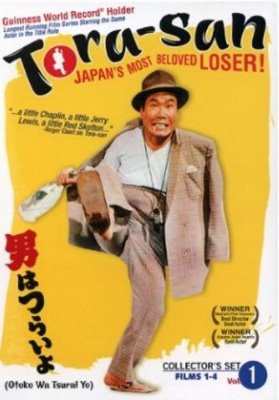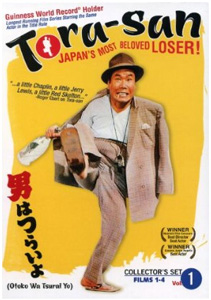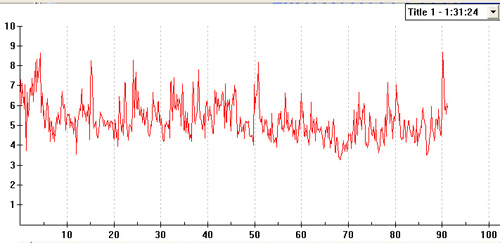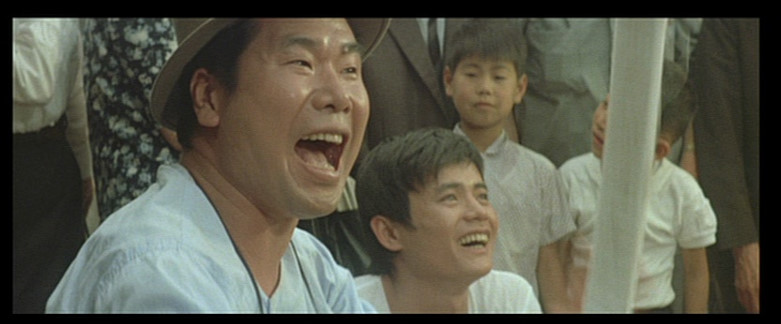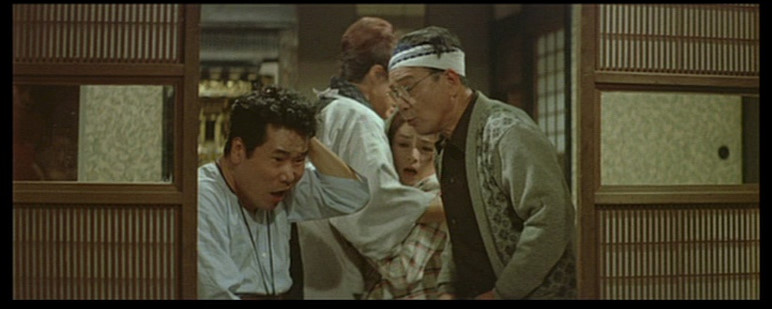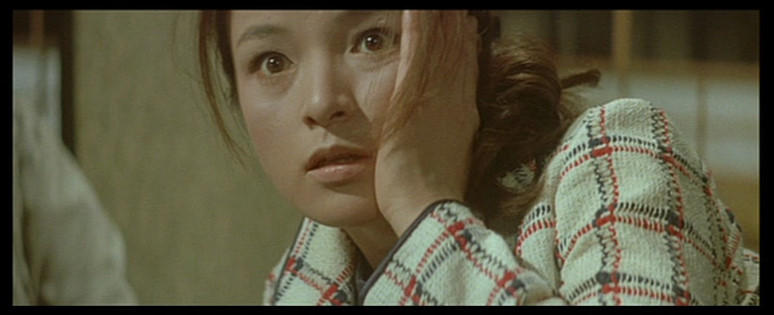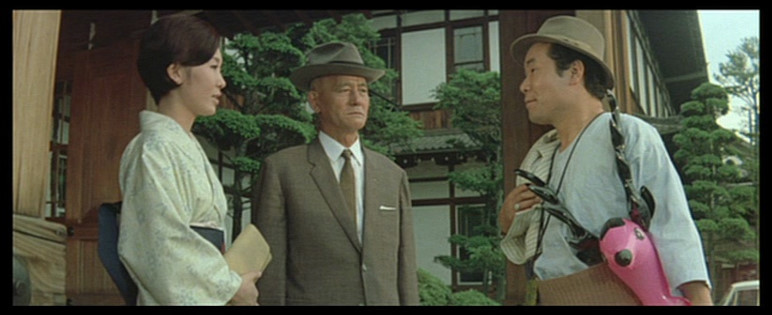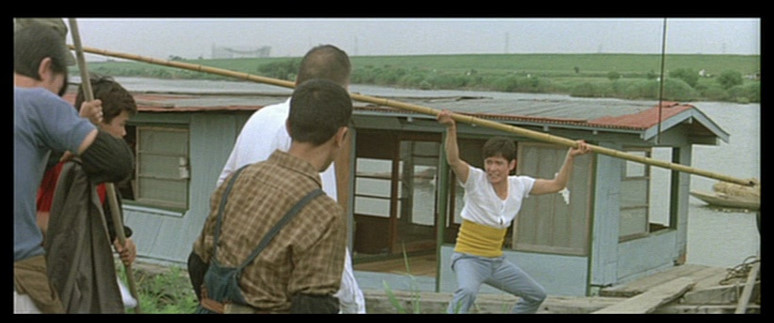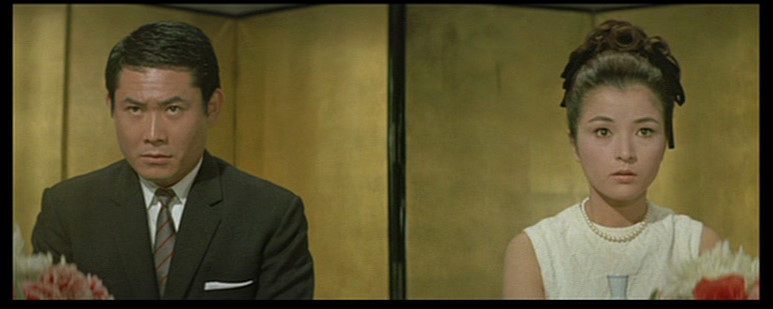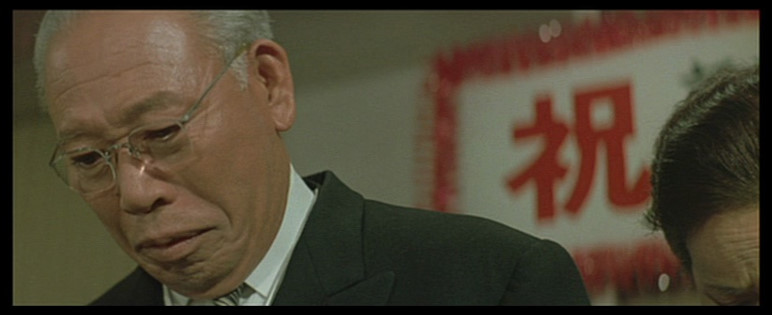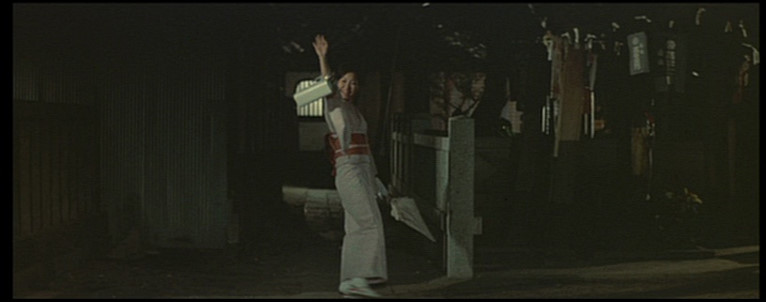![]()
![]()

![]()
![]()
|
Search DVDBeaver |
S E A R C H D V D B e a v e r |
|
|
Tora-San: Collector's Set 1 (4pc)
Directed by
Yoji Yamada
Tora-san : Our Lovable Tramp aka Otoko Wa Tsurai Yo (1969)
Tora-san's Cherished Mother aka Zoku Otoko Wa Tsurai Yo (1969)
Tora-san, His Tender Love aka Otoko Wa Tsurai Yo: Futen No Tora (1970)
Tora-san's Grand Scheme aka Shin Otoko Wa Tsurai Yo (1970)
|
TORA-SAN, a 48-film series, is by far the longest-running film series in Japanese history and the second-longest overall in the world. Typical story lines have Tora-san, a suitcase carrying, leisure-suit wearing, traveling salesman visiting different parts of Japan, where he meets a beautiful young woman, is smitten, and tells her if she ever needs help, she should come visit him in his hometown. After returning home to his family, which disapproves of his wandering lifestyle, the damsel in distress shows up, and Tora-san falls in love. Alas, his attempts to help her, and win her heart, invariably cause her to fall for someone else. Included in the set are the first four films of the series, “It's Tough being a Man”, “Tora-san's Cherished Mother”, “Tora-san, His Tender Love”, and “Tora-san's Grand Scheme”. |
Comments
|
Your basic garden-variety
film fan prides himself on more than a passing acquaintance with movies
made in countries and languages other than their own. While art houses
have permitted access to the likes of Bergman, Bunuel, Truffaut and
Fellini, we have the home video medium to thank for movies from more
obscure sources and those more deeply etched into the culture of any
given region. Taking Japanese films as an example, in addition to more
familiar directors like Kurosawa, Kobayashi, Inagaki and Mizoguchi, we
are now able to order up Mikio Naruse, Yazujiro Ozu, Kon Ichikawa, Sadao
Yamanaka and Masahiro Shinoda - to name the first ones that come to mind
- from local or imported sources, and enjoy them regardless of video
region coding. Anime? Anything we want, many with English subtitles, at
the click of the finger, from creative forces other than Miyazaki. Leonard Norwitz |
DVD Review: Animeigo - Region 1 - NTSC
| DVD Box Cover |
|
CLICK to order from: |
| Distribution | Animeigo - Region 1 - NTSC | |
| Video |
2.35:1
Aspect Ratio Average Bitrate: 6.5 mb/s NTSC 720x480 29.97 f/s |
|
|
NOTE: The Vertical axis represents the bits transferred per second. The Horizontal is the time in minutes. |
||
| Sample Bitrate: |
|
|
| Audio | Japanese (Dolby Digital) | |
| Subtitles | English, None | |
| Features |
Release Information:
Edition Details:
• Audio Commentary for "Tora-san 1" with Film Historian Stuart Galbraith
IV |
|
| Comments: |
TImage:
Audio:
Leonard Norwitz |
DVD
Sample Menus
 |
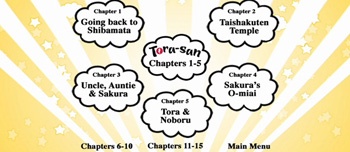 |
Title sample
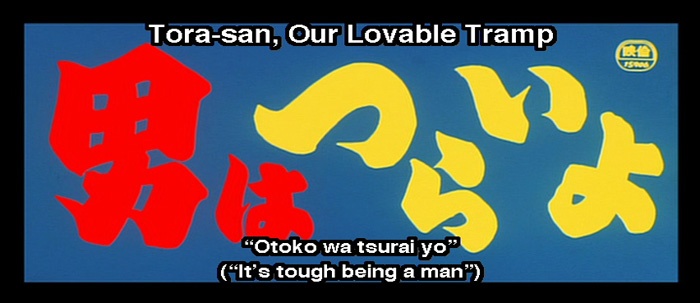 |
Subtitle and Pictureboxing (black bars on side edges) Sample
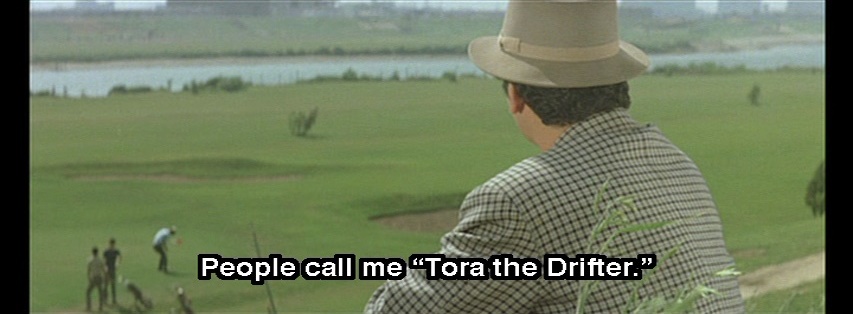 |
Screen Captures
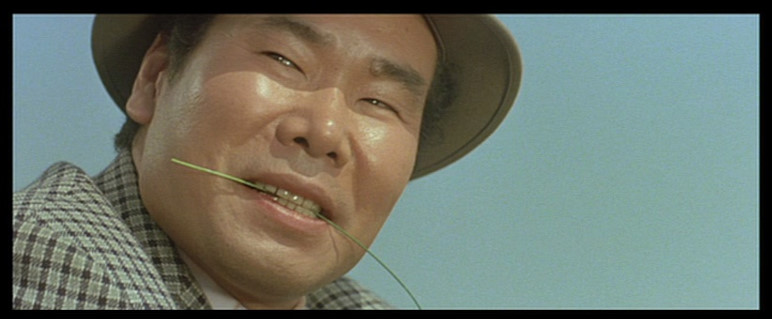 |
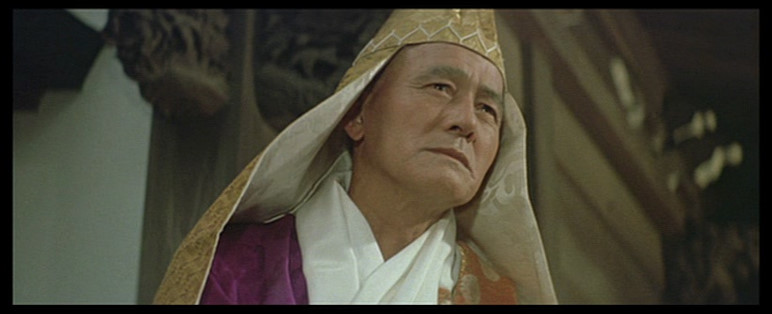 |
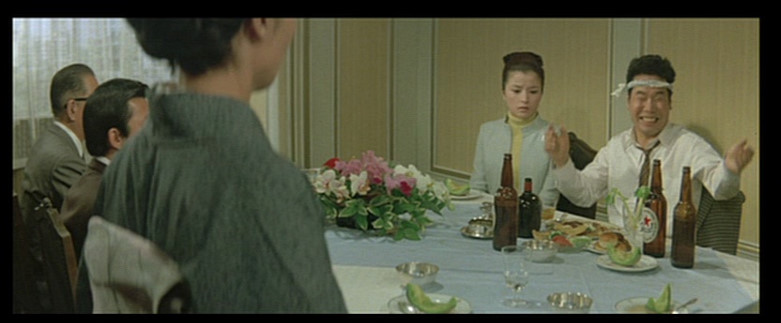 |

